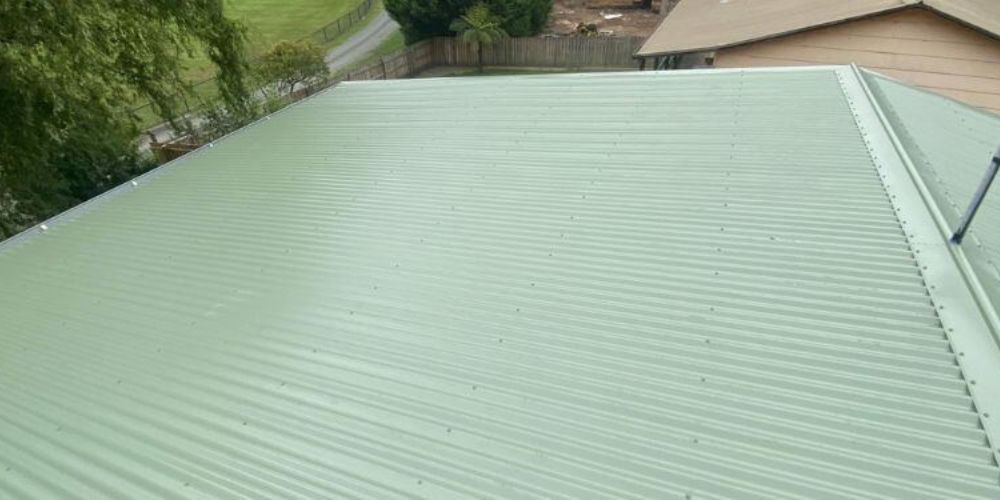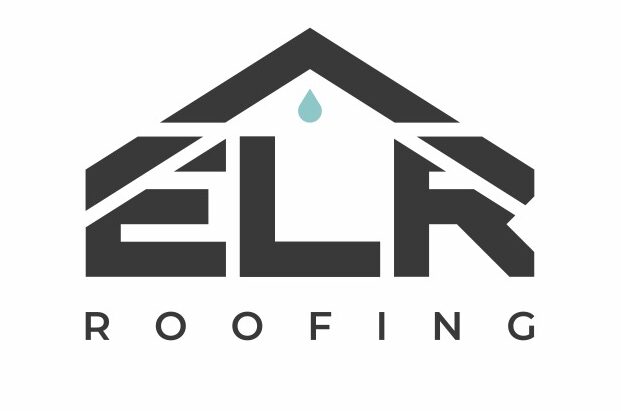Asbestos was previously a common roofing material. It was recognised for its resilience and fire resistance. However, we know that asbestos is hazardous to human health and has been outlawed in many nations. Due to these health issues, it is critical to inspect your property for asbestos in the roofing and address it immediately.
If you suspect asbestos in your roofing material, do not attempt to remove it yourself. Asbestos roof replacement is a complicated and dangerous procedure that qualified and licenced professionals should only carry out. We highly advise contacting a certified asbestos removal contractor for additional information on having asbestos-containing materials removed from your house.

What is an Asbestos Roof?
Asbestos was used in Australia from the 1940s until it was banned in 1985 for asbestos roofing and other building materials. The asbestos fibres were kept inside the matrix of the concrete mix when it was mixed with concrete to make all types of roof asbestos roofing or fibro roofing profiles. As the outside factors continue to pound the unpainted asbestos roofing, the matrix breaks down, and more lethal asbestos fibres are released.
Dangers of Asbestos Roof
Asbestos has been recognised as a proven human carcinogen (cancer-causing substance). Hence considerable caution and care must be exercised when removing the material, which can produce hazardous dust and debris. Asbestos is made up of tiny mineral fibres that, if inhaled, can cause significant respiratory disease and cancer. Having asbestos in your home, specifically an asbestos roof, isn’t always bad. The fibres in cement asbestos roofing are added to the cement, decreasing the health risk if the product is in good shape and not disturbed.
However, many older properties still retain asbestos products as structural contents. Only licenced professionals should manage them to avoid excessive exposure and potential harm.
Why Should You Replace a Damaged Asbestos Roof Right Away?
- Because asbestos cannot be recycled, disposing of a whole roof’s worth of material is an expensive and time-consuming task.
- When asbestos is destroyed, however, it can constitute a significant health danger and must be addressed as quickly as possible. Any damage, such as inappropriate roof access, will result in the discharge of fibres. This damage should be remedied as soon as potential using roof covers or a specially developed sealant.
- Suppose your asbestos roof is starting to leak and show signs of damage. In that case, your primary priority should be your safety and health. That should be reason enough to convince you to replace your roof.
- You must consider the costs against future difficulties if the roof is in good condition. There are techniques to control asbestos, but in the end, you must decide what is best for you and your family.
- Think about the cost of replacing the roof if you want to sell your property soon. You may put off potential purchasers. A new roof is the best option to increase the value of your property.
Should You Stop Using Asbestos Roof?
It all depends. The most frequent type of asbestos used in roofing materials is chrysolite, the least hazardous version utilised on buildings during the twentieth century. Given that your roof is not broken or disturbed, it should be safe. However, as time passes and natural wear and tear takes its toll, this becomes increasingly likely.
As the years pass since asbestos was outlawed for use in roofing, the consensus builds that retaining or postponing the removal of asbestos roofs is only delaying the inevitable. This roofing sheets will need to be replaced sooner or later, and an asbestos roof should be removed as quickly as possible.
Other Options for Asbestos Roofs
While the majority of people choose to have their asbestos roofs removed, there are other options. Preventative measures can reduce the danger of asbestos exposure to your existing roof.
Still, a complete removal is often recommended for maximum safety. While we usually encourage our customers to have their asbestos roof removed, we understand that this is not always easy. It is feasible to make your asbestos safe, extending its lifespan and improving the roof structure’s overall safety. However, due to the apparent risks, fewer and fewer roofing businesses provide this service.
How to Safely Replace your Asbestos Roof by Yourself?
Step # 1: Prepare your safety equipment. Make sure that no skin is exposed.
Before handling asbestos, make sure you’re wearing the appropriate safety equipment. Jumpsuits, goggles, gloves, a helmet, a hood, and a dust mask are all required. Make sure that no flesh is left exposed and that your eyes, mouth, and nose are covered.
Step # 2: Cover the area around and below the roof area.
Place drop sheets around the house to catch any debris from the removal. These will have to be thrown off later. You’ll need lots of sheets to wrap the metal roofing in afterwards to prevent dangerous particles from falling onto your lawn.
Step # 3: Set up safety markings on your roof so you know where you can step on while replacing your damaged asbestos roof.
This can be done with the use of a secure ladder or scaffolding, as well as a series of adequately protected walk cushions. Again, anything used when working with asbestos must be disposed away or carefully cleaned and disinfected afterwards.
Step # 4: Start removing the roofing materials.
If fixings are holding them down, they must first be unscrewed. If any roofing sheets are fastened to the roof with screws or nails that cannot be unbolted, the sheet may need to be broken around the fixing. This must be done Very carefully, and we strongly advise hiring an expert.
Step # 5: Gently remove all the asbestos tiles or sheets.
Any roof tiles or sheets that you remove should be moved gently. Continue this systematically until the roof has been completely removed, taking care not to harm the material.
This step, along with wiping away any dust, is critical. All dust and debris must be securely rid of in the polythene sheets.
The garbage disposal will vary depending on where you reside, but most recycling centres have asbestos disposal options. It ought to be remembered that utilising a car or van to transfer rubbish is far safer than using an open trailer or skip. Suppose you have a large amount of material to dispose of. In that case, you may need to talk to a specialised asbestos removal firm.
The garbage disposal will vary depending on where you reside, but most recycling centres have asbestos disposal options. It ought to be remembered that utilising a car or van to transfer rubbish is far safer than using an open trailer or skip. Suppose you have a large amount of material to dispose of. In that case, you may need to talk to a specialised asbestos removal firm.
Follow the proper procedure in installing an asbestos roof. Safety and precautions should be the top priority while laying out any asbestos roof. As we always suggest, it will be best to ask an expert for help to do the job if you are unsure how to do it.
When calculating asbestos removal and replacement costs, the essential component is preparation and setup. A small area containing asbestos tile may only require one room to be secured against contamination. Still, an entire floor would necessitate significantly more materials and preparation to avoid further exposure. Setting up and sealing the area accounts for roughly 60 to 70% of the entire cost. Disposal fees and material costs vary by location.
Typically, asbestos roof jobs require a team of people to seal an area and coordinate the removal procedure. A typical project takes about 8 hours to complete, and at least two staff are typically required—labour costs between $75 and $200 per worker per hour.
Key Takeaways
Despite popular belief, the presence of asbestos in the home does not require its removal. The only time asbestos poses a health risk is when the loose fibres are breathed. Unfortunately, some diseases take years to manifest following asbestos exposure. Therefore any areas of concern should be checked as soon as possible. Any trace of water damage or tearing indicates that asbestos is likely to be free and must be removed; otherwise, encapsulation may suffice.
